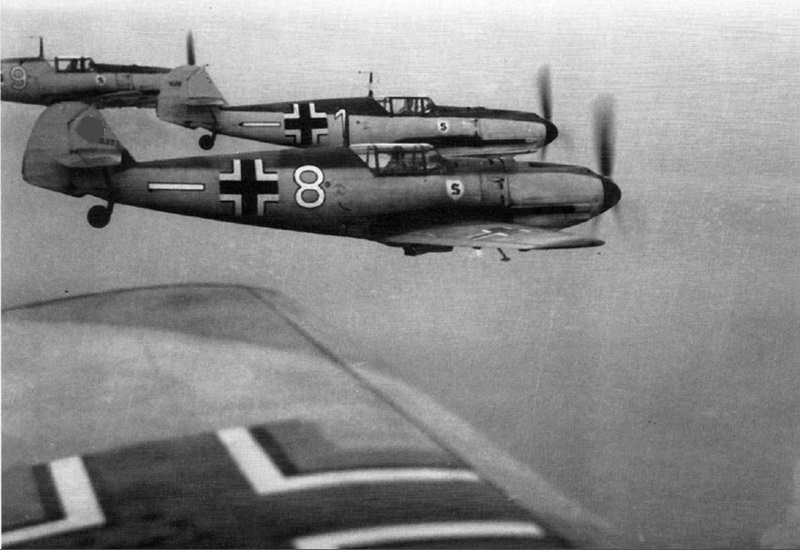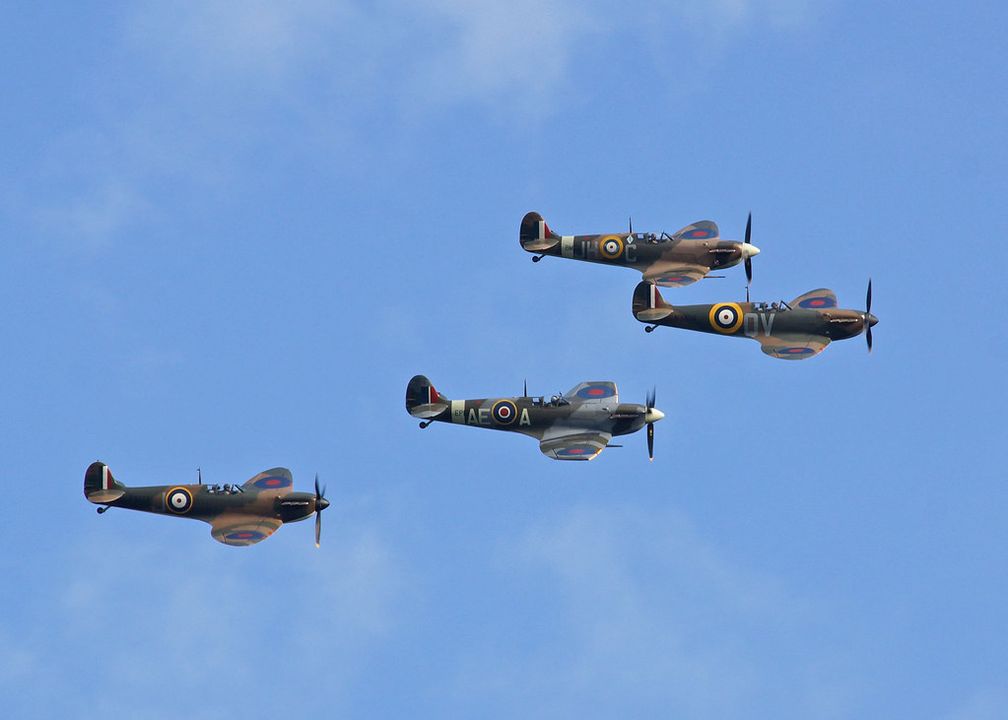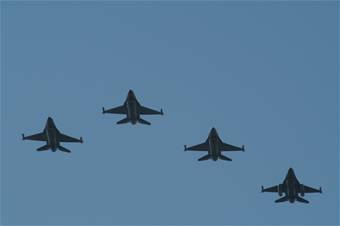Finger-Four / Schwarm Flying Formation

During WWI, flying in formation was impossible due to the lack of radios. Pilots tried to fly in columns or in line ahead but would lose all cohesion on first contact with the enemy or when fired upon by ground troops. Then, it instantly became every man for himself.
Toward the end of WWI and during the inter-war period, every nation would adopt the Vic formation, basically 3 planes flying in a V formation with the leader flying in front. The French called it “Chevron” and the Germans called it “Kette”. The formation made it easier for the two wingmen to follow the leader.
Development and Evolution of Combat Formations
During the Spanish Civil war, the Germans found the Kette not flexible enough. Werner Molders, a future German ace (he became the first pilot in history to achieve 100 aerial victories) devised a 2 plane formation called “Rotte”. The two planes, composed of a leader upfront and a wingman behind and beside, would share the burden. The leader would scan ahead, the wingman would keep an eye toward the back.

Upon engaging the enemy, the leader would fight it out while the wingman would watch his back. Werner pushed the Rotte further by combining two of them together, this formation became known as a Schwarm. A Schwarm is two Rotte (pairs) working together. They could, if needed, split while retaining the Leader-Wingman cohesion.
Impact and Legacy of the Schwarm Formation

The Schwarm became so effective during the opening months of WWII that it ended up being adopted by the allies and Soviets alike. In the West, it became known as the Finger-Four formation. 80 odd years later, this is still how every single modern air force flies its planes.
-RBM.









